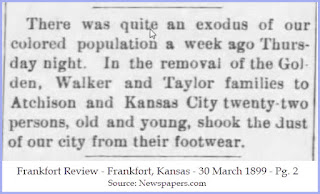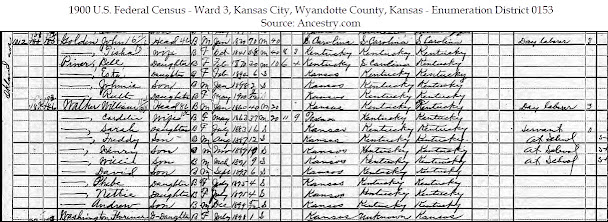There have been a lot of news stories recently following the death of Ruth Bader-Ginsberg. She was a giant who fought for the equality of all citizens but particularly women. As I have listened to the stories, it made me reflect on how I experienced that inequality in my lifetime. Justice Ginsberg is not the only woman who fought this battle, there were many others, but her passing has encouraged me to tell my story. I am an ordinary woman who has had an ordinary life. If that inequality impacted me, then it impacted us all. I don't want the current generation to take for granted the current environment for women, nor do I want them to be satisfied with partial equality.
I was born in 1947, the beginning of the baby boom. My parents divorced when I was seven. I graduated from high school in 1965 and earned a teaching degree from Purdue University in 1969. I married in 1970 and had three children between 1972-1977. These are some of the experiences that I had. Some of them chafed at the time. Some were just the way it was, and so I didn't realize how unfair it was until the times changed, and I could look back. Some still can make me steam. Some were little things but some were big and still impact my life. It was a time when men opened doors for you, pulled out a seat for you to sit in but sat and read the paper at the end of the day while you made and cleaned up dinner, then helped the children with homework and baths because he had "worked" all day!
I don't remember much from my early years so we can skip that, but once when I told my middle school students that we couldn't wear pants to school, they shrieked and couldn't believe it. In typical middle school fashion, they proclaimed that they would do it anyway! I never thought about it at the time because it was just the way it was. There was no school rule, and I don't remember being troubled by it except when I waited for the bus in winter. It didn't have to be a rule because it was the style of the times. My students considered it unbelievable!

Another situation that astounded my students was the fact that there were no girls sports teams in my high school. "So what did you do then?" they shouted at me. Well . . . we got to cheer for the boys. Hmmm . . . I knew I could run as fast as many of the boys on the track team, but there was no team for me to join. My mother was embarrassed when I joined GAA (Girll's Athletic Association) and started playing intramural basketball against other schools. At that time, it was half court - a strange variation of the regular game. Thank you Title IX. Today's girls have many sports options and the scholarships that go with them.
Now back to Purdue. During my freshman year in 1965, female students had "hours". That meant female students had a curfew, and we had to be back to our dorms by a particular time or we would be locked out. The male students had no such curfew, and we were told that they didn't need one because once the girls were in the boys would be too. Obviously, the men making these rules didn't remember their youth very well. This changed in 1966.
Some random situations that I witnessed at Purdue and that friends had to endure: 1.) During this time period, the Vet program at Purdue required females to have a higher GPA than males to get in because they assumed that females would marry and leave the profession and they were limited as to how many they could graduate each year. I guess it never dawned on them that you could do both. 2.) A female engineering senior wondered why her job offers were so much lower that her classmates when her grades were outstanding and she had been president of the engineering association. Then an interviewer told her that they always offered women 10% less! Wow, not only were they discriminatory but unafraid to admit it.
After my graduation, I took a teaching job in South Bend, Indiana. My first contract was for $6300/year. I was renting a room from a sorority sister's mother and paying for my first car - a used monster size Oldsmobile Delta 88. I wanted a Mustang ,but my father thought the Olds would be safer, not to mention cheaper. Money was tight, and so I applied for and received a Sears Credit Card. My reasoning was that I could buy panty hose with the credit card if I was out of money before I got my paycheck. Female teachers in 1969 always wore skirts or dresses with hose and panty hose were usually preferred for comfort. This worked well until I got married and needed to change my name on the card. It turns out that Sears automatically made my husband the primary on the card, and I now had to get his permission to use it. Now, he never had to give them his financial information, but he was the primary and my new card had my name change -- Mrs. Robert Soderberg! My name is not Robert! A couple of years later, when I used the card to purchase some type of tool for my husband but then needed to return it, I was told that only the "primary" user could do that. After I called corporate from a store phone and screamed at them for a half hour, I cut the card in pieces in front of the male clerk and let it drop to the floor. I think they eventually changed this policy, but they lost my business long before that.
Of course, I also ran into the usual "Why don't you bring your husband back so we can talk." when I went shopping for a new car, and the wife's income was never included when applying for a mortgage. WHY??

Then in 1969 I was hired by the South Bend Community School Corporation to teach 7th and 8th grade Home Economics at Harrison Elementary/Jr. High. I loved teaching and enjoyed my students. I spent most of my childhood in a small town and South Bend felt like a big city to me. There were many situations that I found frustrating and unfair during my three years teaching there, however, there is one big problem that I am still living with. At this time South Bend had a policy that women had to quit teaching when they were 4 months pregnant or before. I married in 1970 and was pregnant with my first child who was due late October 1972. At this point, I would just be slightly over the 4 month cut off policy. Another teacher, a couple of rooms down from me had to quit the beginning of May due to this policy. I guess they picked 4 months because they assumed that no one would know your were pregnant yet. So I stayed home through the next year - they did not hold your position for you. When I tried to look into returning there were no openings and it remained that way for several years. I was frustrated but resigned to the situation and went on to other things. During this time South Bend had been taken to court for this policy and naturally they lost so they could no longer compel a female teacher to quit when she was pregnant. I celebrated this victory despite it being too late for me.
I had two more children, but when I finally returned to teaching in the South Bend School system, I discovered their policy would forever impact me. They had a two tier seniority system - years teaching in district and years teaching out of district. BUT, if you had taught less that 5 years with South Bend, those years were in the "out of district" column. So multiple times I lost out on positions to people with fewer years teaching in South Bend than I had because three years of my SB experience were in the "out of district" column. Finally, near my retirement, there was a calculation for retirement monies based on our years of service - but they only counted in district years! Of course, I came up three years short!
I wish I had been more politically active, but my nature is to be a rule follower. Some might say a complaining rule follower but . . . I am grateful for all of the women before me who raised their voices and fought for equal rights. My children and grandchildren, both male and female, are the better for it, but we are not done yet. The fight goes on.



























































